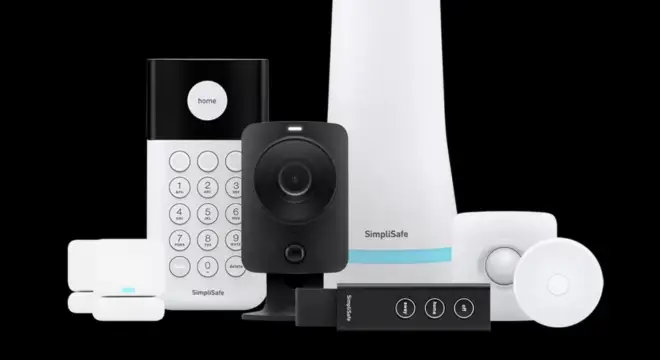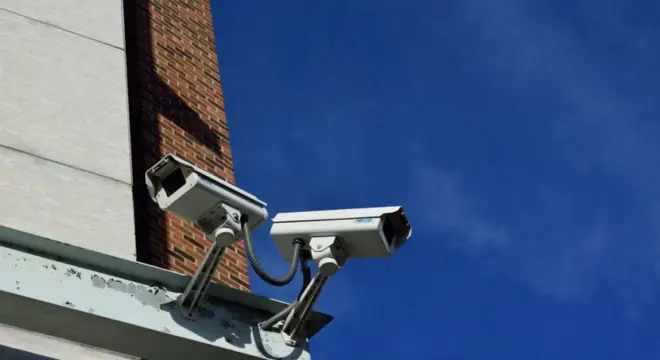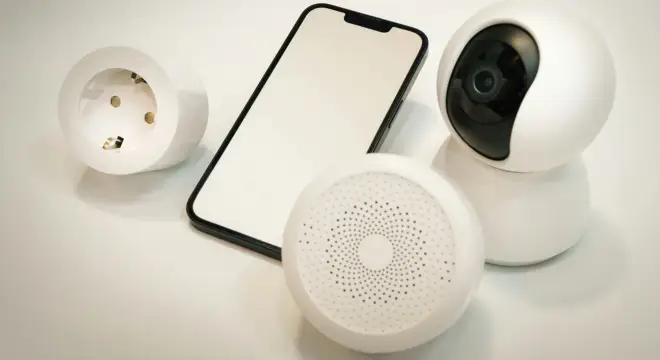Complete Guide to Choosing the Best Home Security System for Your Needs
Have you actually had a thought about how safe your home really is when you are not around? That in itself raises new crimes and other threats? Does your home security conform with the latest requirement for providing ample protection to you and your loved ones?
People today are increasingly worried about home security, and this has to be easily acknowledged. If it isn’t every day, it has to be nearly every day that one sees stories about home burglaries. Yet, every time that happens, a pertinent question arises: What makes homeowners targets for burglars?
From evidence, it can be observed that not declaring clearly that possessions are existent within the offenders’ line of sight does help limit exposure to bandits, e.g., bright, new television sets and plenty of gadgets. They could even have an open garage doors from dawn to dusk, making the house even less secured against a possible break-in.
However, there arises the additional thought: “If you were to be a little less flashy about the expensive goodies you flaunt, would probably never a target?” Burglars, apparently, plainly burglarized houses with a clear view of their value from the plane of the street.
Types of Home Security Systems
DIY Security Systems
Advantages
- Affordable: Less expensive than professional installations.
- Customizable: You can choose components based on your needs.
- Flexibility: This means you may install the system at your own pace and customize the setup as needed.
Disadvantages
- No professional support: You’re on your own if something goes wrong.
- Complexity: Installation of advanced systems may require technical know-how.
- Possible security gaps: Improper installation may leave any weak points in your security system.
Professional Security Systems
Pros
- Expert installation assures complete and thorough installation.
- 24/7 monitoring allows for constant surveillance and immediate responses to emergencies.
- Coverage is all-inclusive: Usually, all things security from cameras and motion detection to alarms.
Cons
- Cost more: Installation fees plus monthly monitoring may, in some cases, run into costs.
- Less flexibility: Customizations will be limited to what the service provider has to offer.
- Contractual obligations: Long-term contracts are often required with many professional systems.
Professional Security Monitoring – Is It Worth It?
Is professional security monitoring worth it?
Professional monitoring is worth it for high-risk areas or expensive properties.
Pros:
- 24/7 Surveillance – Immediate response to break-ins.
- Police/Fire Alerts – Reduces emergency response time.
- Remote Access – Get real-time notifications.
Cons:
- Monthly subscription cost.
- Potential false alarms leading to fines.
Monitored vs. Unmonitored Systems
1. Monitored
Pro
- Immediate response: Alerts are shot immediately to the monitoring center which might later alert authorities if need be.
- 24-hour protection: Never turns off so one can have peace of mind around the clock.
- Remote access: Enables access from anywhere via a smartphone or device.
Cons
- Ongoing costs: The monthly monitoring costs, though they do exist.
- Third-party reliance: Their ability to effectively operate-and not fail-is vital to what they provide.
2. Unmonitored System has;
Pros:
- No monthly fees: You have latitude; hence, no obligations that later may affect your financial standing.
- Independence: You will be the one responsible to respond whenever called.
- Confidentiality: All alerts and data shall not be shared other than with you.
Cons:
- Delayed response: You or anyone else must be available in case alerts do arise.
- No constant support: For emergencies, professional assistance will not be ready on standby.
Wired vs. Wireless Systems
A wired system refers to that system which is connected by wire.
Pros:
- Reliable: There is hardly any chance for interference from outside influences; it is practically impervious to hacking. There is a stable power source, so it does not rely on the battery that would require frequent replacements.
Cons:
- Complex installation: Drilling, cable running, and other invasive installation processes are required.
- Less flexible: Moving the sensors or the cameras becomes another challenge after installation.
Wireless Systems
Wireless system refers to that system which is not connected by wire.
Pros:
- Easy to install: No drilling is required for sensors and cameras, hence they can be set up and relocated with ease.
- Very flexible: Ideally suited for a tenant or a person living in rented apartments.
- Remote Control: The system can even be accessed and worked upon through smartphones or any other type of connected devices.
Cons:
- Battery life: Requires constant battery replacement of its sensors and cameras. This is a point of concern.
- Susceptible to interference: The signal strength may be affected by barriers encountered by the signal and interference from other devices.
Smart Home Integration
1. Smart Home Integration (Alexa, Google Home, IoT devices)
Advantages:
1. Comfort and convenience: You control the security through its app or voice commands, along with other smart devices such as lights, locks, and thermostats.
2. Automation: Routines can include turning on lights at a specific time or locking doors when leaving.
3. Increased control: Manage your home security away from home with your smartphone or smart speaker.
Disadvantages:
1. Complicated setup: You might need some technical expertise to integrate it with older products.
2. Privacy concerns: The more you integrate your gadgets, the more data you’re sharing with those platforms.
3. Vulnerability to hacking: By increasing the number of devices interacting over the internet, your system opens itself up to all sorts of potential online threats, subject to whatever security is installed.
Highest Level of Home Security (Ultimate Protection Systems)
What is the highest level of home security?
- The highest level of home security includes AI-powered surveillance, 24/7 professional monitoring, biometric access control, and smart automation.
- Features like military-grade encryption, panic buttons, private security patrols, and facial recognition systems are part of ultra-premium security setups.
- Example: High-net-worth individuals and celebrities often use customized security solutions with armed guards and AI-based threat detection.
What is the highest level of security system?
- Level 7 Security refers to the most advanced security systems used in government buildings, banks, and high-profile residences.
- It includes multi-layered authentication, hardened structures, motion-triggered defenses, and cybersecurity integration to prevent hacking attempts.

Top Home Security Systems – Detailed Comparison
| Security System | Key Featur | Pricing (approx.) | Installation | Smart Home Integration |
| Vivint | HD cameras, motion sensors, doorbell cameras, 24/7 professional monitoring | $599 (equipment) + installation | Professional installation required | Alexa, Google Assistant, IoT devices |
| ADT | 24/7 professional monitoring, video surveillance, fire & carbon monoxide sensors | $200–$400 (equipment) | Professional installation required | Alexa, Google Assistant |
| Ring Alarm | HD video doorbell, motion detectors, door/window sensors, optional monitoring | $199 (equipment) | DIY or professional installation | Alexa, Google Assistant |
| Frontpoint | HD cameras, smart locks, motion sensors, remote control via app | $99–$500 (equipment) | DIY installation | Alexa, Google Assistant |
| SimpliSafe | DIY setup, video surveillance, motion sensors, environmental monitoring | $200–$500 (equipment) | DIY installation | Alexa, Google Assistant |
| Abode | Video surveillance, motion sensors, smart home integration, customizable packages | $229–$399 (equipment) | DIY or professional installation | Alexa, Google Assistant, Apple HomeKit |
Cost of Home Security & Monthly Fees
How much is HomePro Security per month?
- HomePro Security Plans range from ₹500 to ₹2,500 per month, depending on the package.
- Some services offer zero upfront cost but higher monthly fees for monitoring.
Features to Look for in a Home Security System
1. Motion Detection
- The Path: It is one of the most important parts of modern security systems. This would help identify when any unauthorized movement happens around the house or in the house. Then, an alert can be sent to your mobile phone or to the monitoring service.
How It works:
- Motion will sense any physical movement around, either from infrared technology.
- Once detected, the system can activate cameras, record videos, or send alerts to your mobile device.
The advantages:
- It deters burglars from creeping in undetected.
- Can activate cameras, lights, and alarms, providing immediate responses to security.
2. AI Alerts
Why It Matters
AI boosts the home security system since it enables it to recognize specific patterns or unusual behavior. This reduces the occurrences of false alarms and enables quicker action to be taken whenever required.
How It Works
- AI-enabled cameras analyze the video in real-time and learn how to differentiate between kinds of movements (human vs pet, for that matter).
- The system can send you smart alerts or inform you about specific events, e.g., “person detected at your front door”.
Key Benefits
- More accurate alerts. Reduced false alarms, saving you time and effort.
- Smart identification of different threats like package theft or burglary.
3. Night Vision
Why It’s Important
- Under extreme low light or total darkness, it is very substantial to have your home under surveillance 24/7. Night vision cameras can guarantee clear video footage at night, when many intrusions happen.
How It Works
- Night vision work with infrared (IR) LEDs to illuminate the area around the camera, which helps produce clear images or video in the dark.
Major Benefits
- Time-free surveillance, day or night.
- Increased identification of intruders or suspicious activities at night.
4. Cloud Storage
Reasons for Its Importance
- To store video footage on Cloud is to ensure that the footage can be accessed from any remote place. The cloud will help avoid loss of footage in case the hardware of the security system gets damaged or must be kept away.
How It Works
- Cloud storage provides video recording remotely, continuously or on an event basis.
- Securely view footage via mobile apps or websites.
Key Benefits
- Remote access to video footage from any device.
- Secure backup of the footage, even if the system is tampered or stolen.
- Storage capacity that’s usually unlimited depending on your subscription.
5. Mobile App Compatibility and Remote Access
Why It Matters
- Mobile app compatibility is significant for home watchers wishing to keep tabs on their houses while away. The ability to monitor and control one’s security system remotely gives peace of mind, no matter their distance from home.
How It Works
- Most modern security systems have specialty apps (available both on iOS and Android) that enable users to manage their system, view live feeds, and receive alerts via their phone.
- Remote access enables you to manage system settings, arm and disarm the alarm, view camera feeds, and more from a smartphone or tablet.
Key Benefits
- Convenient remote management of the security system.
- Instant notifications about suspicious activity or emergencies.
- Can be integrated with various other smart home devices.
6. Cybersecurity and Hacking Prevention Tips
Importance: With home security systems becoming increasingly interconnected via Wi-Fi and mobile apps, their cyber protection can no longer be ignored. Hackers can potentially find their way into your cameras, sensors, and data, should the system be inviting enough.
Prevention:
- Encryption: Be sure the system encrypts data during transmission (AES-256 is considered strong).
- Wireless Security: Strong passwords and WPA3 encryption for your Wi-Fi will prevent unauthorized access.
- Two-Factor Authentication: Enable two-factor authentication on the companion mobile app and the online account linked to the security system.
- Software Updates: Regular updates of the system’s firmware and apps will cover security gaps.
- Use a VPN: Using a VPN while accessing your home security system remotely makes it extremely difficult for hackers to capture your data.
The main features:
- Keep insecure access at bay and avoid misuse of your home security system.
- Privacy of your footage, stored data, and personal information is preserved.
Future Trends in Home Security
1. AI & Machine Learning in Home Security
AI and machine learning are revolutionizing home security systems. These technologies are helping to create smarter security systems that can learn and adapt to patterns in your home’s environment.
- AI-powered cameras can analyze faces, objects, and activities, offering real-time alerts based on unusual behavior.
- Predictive analytics can anticipate potential threats by learning patterns in activity and flagging anomalies before they happen.
- Smart automation allows systems to adjust in real-time, improving efficiency and security without human intervention.
2. Smart Surveillance & Facial Recognition Technology
Smart surveillance systems are becoming more advanced and accessible.
- Facial recognition technology is increasingly being integrated into home security systems, allowing for enhanced identification of individuals entering and leaving the premises.
- Cloud-based video storage allows footage to be securely stored and accessed remotely, reducing the risk of losing vital evidence.
- With the rise of smart cameras, users can view footage from anywhere, track real-time events, and even speak through two-way audio.
3. Impact of 5G and IoT on Home Security
The rollout of 5G technology and the expansion of Internet of Things (IoT) devices are set to make home security systems faster, more reliable, and more connected.
- 5G will enable quicker transmission of data, leading to real-time responses from security systems.
- IoT devices such as smart locks, connected cameras, and motion sensors will work together seamlessly, offering a highly integrated security network.
- The increased speed and connectivity of 5G will also allow for instantaneous communication with emergency services, reducing response times in critical situations.
Frequently Asked Questions (FAQs)
1. How much is HomePro security per month?
HomePro Security plans typically range from ₹500 to ₹2,500 per month depending on the chosen package. Some services may offer no upfront cost but higher monthly fees for monitoring and advanced features. Pricing varies based on the coverage, installation type, and features included in the package.
2. Is professional security monitoring worth it?
Yes, professional security monitoring is worth it for those who live in high-risk areas or have valuable assets.
- 24/7 surveillance provides continuous monitoring.
- Instant alerts to the authorities (police/fire departments) can reduce emergency response time.
- Remote access allows homeowners to stay connected and monitor their home from anywhere. However, it comes with monthly subscription fees and the possibility of false alarms.
3. Who is the best home security company?
The best home security company depends on your needs, but some top providers include:
- ADT – Known for reliable monitoring services.
- Vivint – Offers smart home integration.
- Ring – Excellent for budget-friendly and customizable systems.
- CP Plus and Hikvision – Popular in India for CCTV and surveillance solutions.
4. What is professional security?
Professional security refers to trained personnel or monitored security services that provide protection and safety for homes, businesses, or properties. These services can include armed guards, surveillance, 24/7 monitoring, and emergency response.
5. Who is a security professional?
A security professional is someone trained and certified in protecting people, property, and assets. They may work in roles such as security guards, security consultants, or surveillance specialists, ensuring safety through various means like technology, physical security measures, and threat assessment.
6. What is SPF in security?
SPF stands for Sender Policy Framework. It is an email authentication protocol used to detect and prevent email spoofing. SPF helps ensure that emails sent to your inbox are from trusted sources and not forged addresses attempting to impersonate someone.
7. What is the full form of ADT security?
ADT stands for American District Telegraph. It is one of the oldest and most well-known home security companies, providing monitoring services, alarm systems, and video surveillance to homes and businesses.
Let’s dive in and ensure your home stays CO-free and safe.
Conclusion
Home security systems vary based on needs. For budget-friendly options, DIY kits like Zicom or SecureEye work well. For smart homes, Vivint or Ring offer advanced features. Large homes or high-risk areas benefit from premium systems like ADT or Hikvision. For apartments, wireless systems like SimpliSafe are ideal.
Which home security system is best for you? Choose the right option based on your needs and upgrade your home’s security. If you’re unsure, feel free to comment or consult an expert! Ensure your peace of mind with the right security system today!


